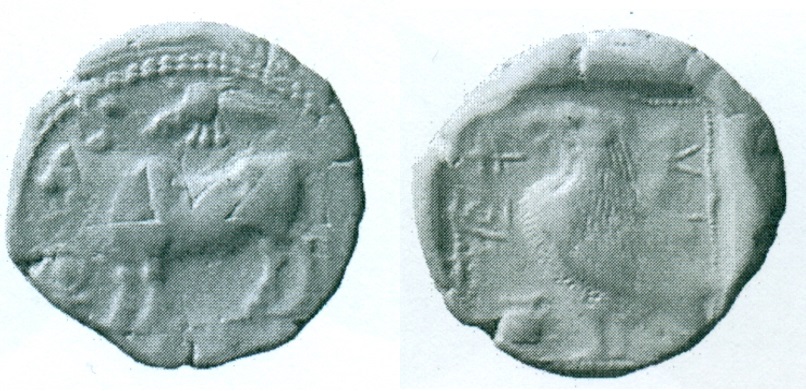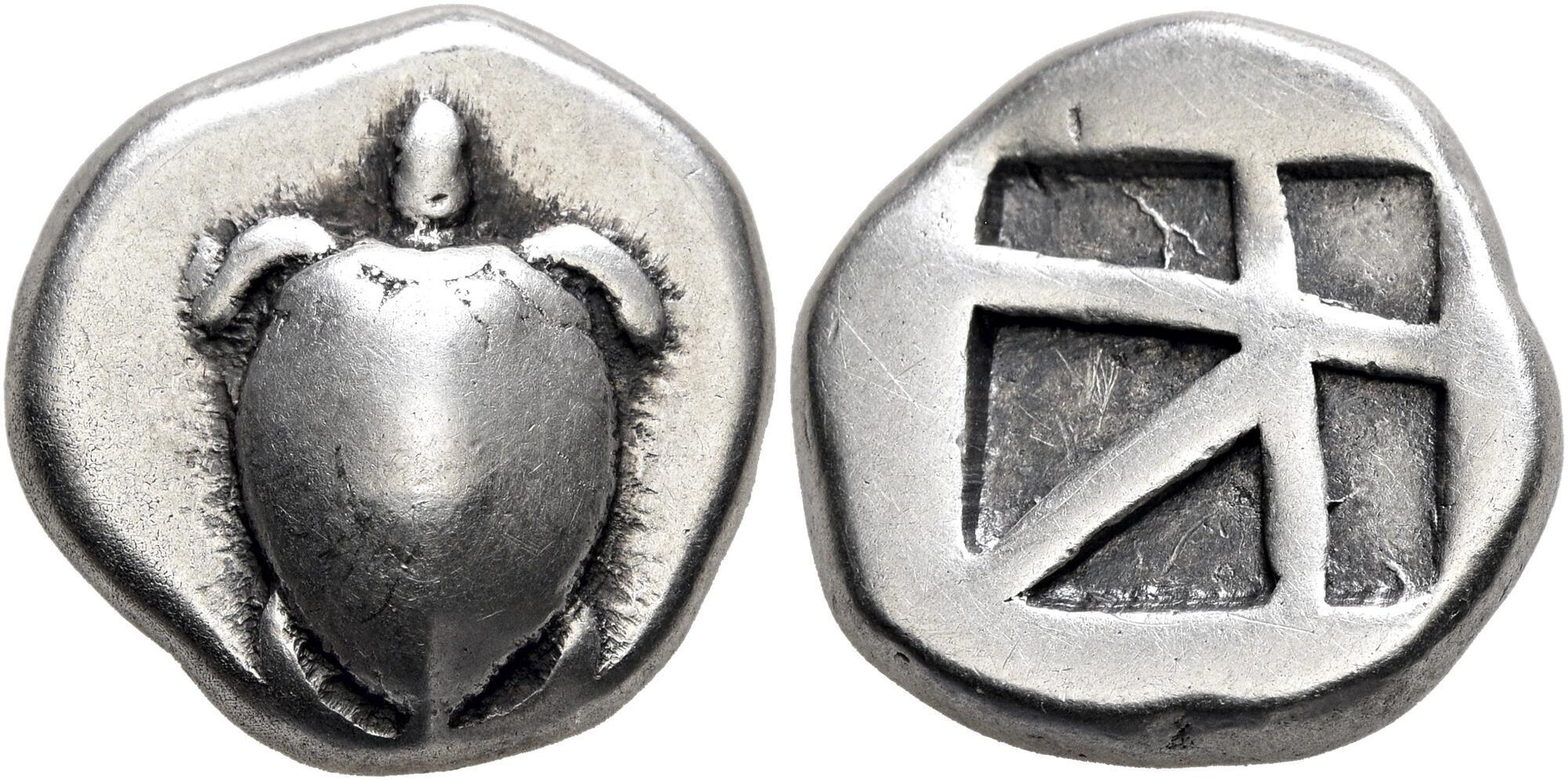430 BCE - 420 BCE | 'pa-si sa-ta-sa' in Cypriot script around
Overstriking coin
Paphos_1818_Alpha_Bank.jpg
Description
| ObverseInscription or printing placed on the obverse.:
|
Bull standing to left, winged solar disk above, ankh to left, palmette ornament in exergue
|
ReverseInscription or printing placed on the reverse.:
|
'pa-si sa-ta-sa' in Cypriot script around (Cypriot) Eagle standing to left, one-handled vase to left, all within dotted square in incuse square
|
Mint and issuing power
| MintIdentifies the place of manufacture or issue of a numismatic object.:
|
Paphos
|
Ancient regionAncient region.
|
Cyprus
|
Modern countryModern country: Greece
|
AuthorityIdentifies the issuing power. The authority can be "pretended" when the name or the portrait of X is on the coin but he/she was not the issuing power. It can also be "uncertain" when there is no mention of X on the coin but he/she was the issuing power according to the historical sources:
|
Stasandros of Paphos (king of Paphos, 5th c BC)
|
Chronology
| FromIdentifies the initial date in a range assigned in a numismatic context. 430 BCE toIdentifies the final date in a range assigned in a numismatic context.. 420 BCE
|
Classical 480-323 BC  periodTime period of the numismatic object. periodTime period of the numismatic object.
|
Physical description
MetalThe physical material (usually metal) from which an object is made.: Silver 
|
WeightWeight of the numismatic object (in grams). in grams: 11.0311.03 g <br />11,030 mg <br />
|
DenominationTerm indicating the value of a numismatic object. Examples: tetradrachm, chalkous, denarius.: double siglos 
|
|
|
|
StandardStandard.: Persian
|
References
Description
| ObverseInscription or printing placed on the obverse.:
|
Land tortoise with segmented shell (visible on the coin's reverse).
|
ReverseInscription or printing placed on the reverse.:
|
Large square incuse with heavy skew pattern (visible on the coin's obverse : mill-sail reverse pattern).
|
Mint and issuing power
| MintIdentifies the place of manufacture or issue of a numismatic object. ᵖ:
|
Aegina
|
Ancient regionAncient region. ᵖ
|
Attica
|
Modern countryModern country: Greece
|
AuthorityIdentifies the authority in whose name (explicitly or implicitly) a numismatic object was issued. ᵖ:
|
|
Chronology
| FromIdentifies the initial date in a range assigned in a numismatic context. 460 BCE toIdentifies the final date in a range assigned in a numismatic context.. 430 BCE
|
Classical 480-323 BC  periodTime period of the numismatic object. periodTime period of the numismatic object.
|
Physical description
| DenominationTerm indicating the value of a numismatic object. Examples: tetradrachm, chalkous, denarius. ᵖ:
|
stater 
|
StandardStandard. ᵖ:
|
Aeginetic
|
References
References
- ^ Tziambazis, Elias (2002), A catalogue of the coins of Cyprus: from 560 B.C. to 1571 A.D., Larnaca, 89 p.
- ^ Zapiti, Eleni - Michaelidou, Lefki (2008), Coins of Cyprus : from the collection of the Bank of Cyprus Cultural Foundation, Nicosia, Bank of Cyprus Cultural Foundation, 329 p.
- ^ Destrooper-Georgiades, A. (2013), "Monnaies chypriotes surfrappées des cités-royaumes," in Demetrios Michaelides (ed.), Epigraphy, numismatics, prosopography and History of Ancient Cyprus. Papers in honour of Ino Nicolaou, Studies in Mediterranean Archaeology and Literature PB 179, Uppsala, p. 9-40.
- ^ Hoover, Oliver D. (2010), The Handbook of Greek Coinage Series, volume 6 : handbook of coins of the islands: Adriatic, Iionian, Thracian, Aegean, and Carpathian seas (excluding Crete and Cyprus), sixth to first centuries BC, Lancaster, 358 p.
- ^ Meadows, Andrew (forthcoming), Greek coinage in the Persian Empire: The Malayer 1934 Hoard (IGCH 1790).


